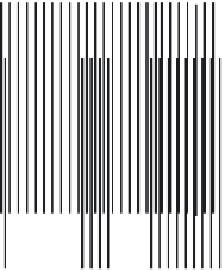Geoscience Reference
In-Depth Information
the years. Multiple deployments of single phones that sink to or are planted in the
seabed and later recovered is one technique. More popular are cables that are laid on
or dragged across the seabed during acquisition. A recent innovation is cables that are
permanently buried over a producing field and are hooked up to a recording vessel
whenever a survey is required. Although the initial survey using this last technique
is very expensive, any repeat survey is relatively cheap since the boat is not required
to lift and drag the cables. In operations using cables, two vessels are needed though
each can be substantially smaller and less powerful than a standard marine 3-D boat.
One boat is attached to umbilicals from the cables and is the recording boat, remaining
stationary while a second boat tows the source and sails around the survey area shoot-
ing a dense pattern of shots. In this way the acquisition becomes more similar to land
operations, where it is also common to shoot a series of shots from different locations
into static receiver cables. In all cases the separation between lines of receivers is much
greater than with standard marine techniques, fold being built by a dense coverage of
shots.
Figure 2.15
shows two examples of marine four-component shooting geome-
tries. The source used is generally a standard marine source, although occasionally
with some tuning of the gun array to give a signature that is more uniform over a
larger range of angles than the more directional source used in standard 3-D seismic
surveys.
Both acquisition costs and processing time are greater for converted wave data, so
it is seldom used in areas with a good P-wave image. Indeed, the amplitude versus
offset information in conventional P-wave data contains information on the shear wave
contrasts (see
chapter 5
). However, the technique has proved useful in areas where the
P-wave image is obscured by gas clouds.
Staggered Orthogonal Shooting
Geometry
4 Cables: 450 m separation
26 Shot lines: 450 m separation
25 m shot distance
Parallel Geometry
4 Cables: 450 m separation
21 Shot lines: flip-flop 25 m shot distance
75 m separation
7.35 km
3.0 km
4.5 km
3.0 km
Fig. 2.15
Typical marine four-component geometries (not to scale).


























